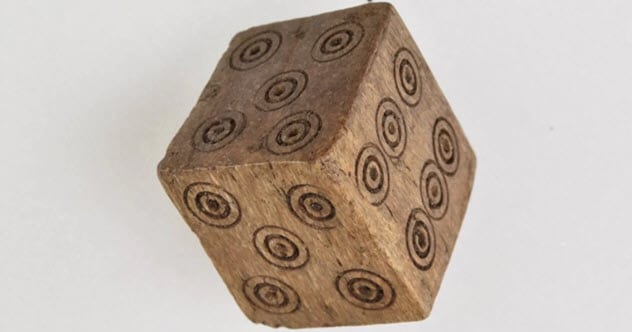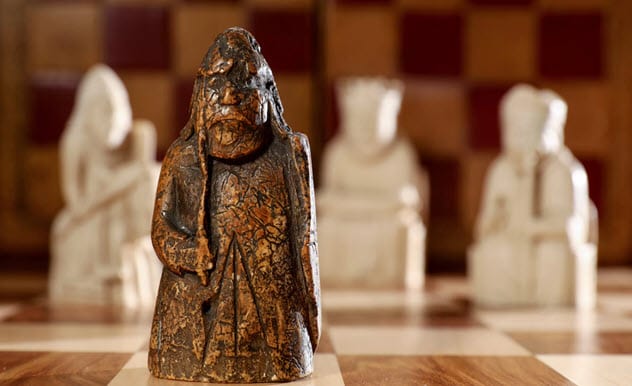6 The Bergen Dice

Archaeologists investigated Bergen in Norway in 2018. In the Vagsbunnen neighborhood, they discovered a wooden cube close to a medieval roadway while doing excavations. The block was immediately recognized as a dice due to the fact that it had dots on either side (aka die).
No one was initially shocked by Bergen’s discovery of the medieval dice, which number over 30. The abnormality of the dice was soon obvious. The sides for 1 and 2 were missing from the 600-year-old item. There were sides with 3 to 6 dots, but the additional 4 and 5 were located where the missing numbers should have been.
There used to be a lot of taverns and inns in the neighborhood, and their patrons undoubtedly liked to gamble. This dice would have provided its possessor with an unfair advantage in a game of chance. Alternately, it may have been launched during a game in which 1 and 2 were never utilized. Archaeologists are pretty positive, nevertheless, that someone made the cube specifically to enable them to cheat.
5 A Lewis Warder

Four sets of medieval chess pieces were discovered in 1831 on the Scottish island of Lewis. The “Lewis hoard” was a collection of carvings made from walrus tusks. Researchers were delighted by the peeks into medieval life provided by the little creatures’ attire and actions, but there was one more thing that would have made them happiest.
There are gaps in the chess sets. Never had five pieces been located. An antique shop bought a little statue in 1964. In his documents, the owner referred to the purchase as a “antique walrus tusk warrior chessman.” He should have been aware. The object, however, was just taken to the auction house Sotheby’s for evaluation after being passed down in the Edinburgh family for 55 years.
One of the missing Lewis items was confirmed recognized as belonging to it. It was a warder, or rook or castle in contemporary chess. The figure was darker than the other Lewis sculptures for some reason, held a sword, and exhibited a frown. Amazingly, the antique merchant paid $5 for it, despite the fact that it is actually worth $1,3 million.








